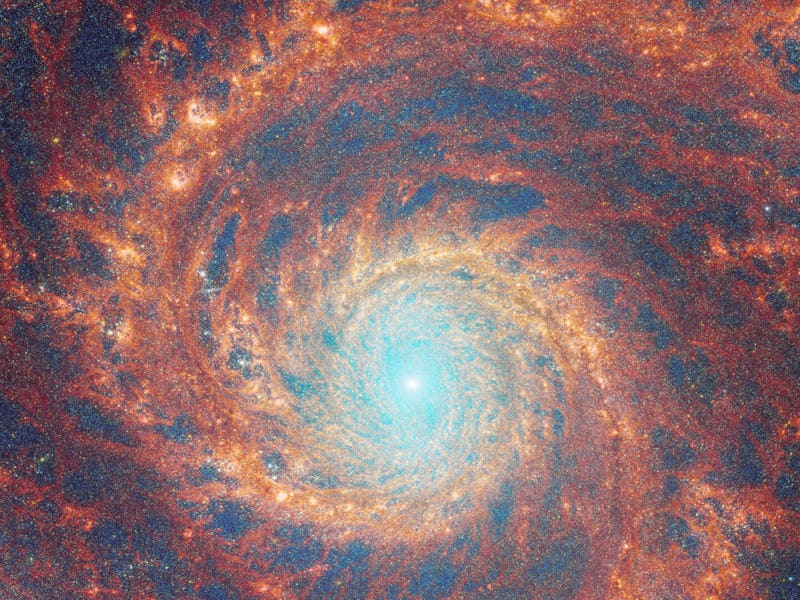Webb Telescope Captures an Incredible Look at the Whirlpool Galaxy
Astronomers peered into the broad arms and "cavernous bubbles" of the Whirlpool Galaxy with the Webb Space Telescope.

When galaxies appear in all their majesty to telescopes, what we are really seeing is the final result of many processes. And these have left astronomers puzzled. Thanks to next-generation observatories like the James Webb Space Telescope (JWST), this artistry becomes less mysterious.
Take for instance the new JWST image of nearby galaxy M51, also known as the Whirlpool Galaxy. It’s filled with clues about what could be shaping the galaxy’s grand designs in the constellation Canes Venatici some 27 million light-years away from Earth. The European Space Agency (ESA), which manages JWST with NASA and the Canadian Space Agency, published the image on Tuesday.
The Whirlpool Galaxy is a “grand-design” spiral galaxy. “Unlike the menagerie of weird and wonderful spiral galaxies with ragged or disrupted spiral arms, grand-design spiral galaxies boast prominent, well-developed spiral arms like the ones showcased in this image,” ESA officials write in Tuesday’s announcement.
Why did the telescope look at the Whirlpool Galaxy?
This new image comes by way of FEAST (short for “Feedback in Emerging extrAgalactic Star clusTers”), a series of observations through which astronomers hope to better understand a critical component of what makes this “galactic portrait” sublime.
With JWST’s Near-Infrared Camera and Mid-Infrared Instrument, astronomers are investigating a phenomenon called stellar feedback.
Stars begin their lives in cloudy cocoons of dust and gas, and generally have many siblings sharing their nursery. When they get hearty enough to produce radiation, this outpouring of energy affects the environment that formed them. By understanding stellar feedback, astronomers can develop more accurate models for star formation.
As stars grow, their energies have this hyper-local influence. But stellar feedback has grander effects, too, that can shape whether enough ingredients for planets linger around nearby stars, or how many members of a stellar cluster form, and all this scales up to the mesmerizing appearance of the galaxy at large.
“Stellar feedback has a dramatic effect on the medium of the galaxy and creates [a] complex network of bright knots as well as cavernous black bubbles,” ESA officials write in the announcement.
Stellar feedback is one of the biggest uncertainties in star and galaxy formations today, according to Laura Lopez, astrophysicist at the Ohio State University. But with the sensitivity of observatories like JWST, they are piecing together the puzzle.
This article was originally published on